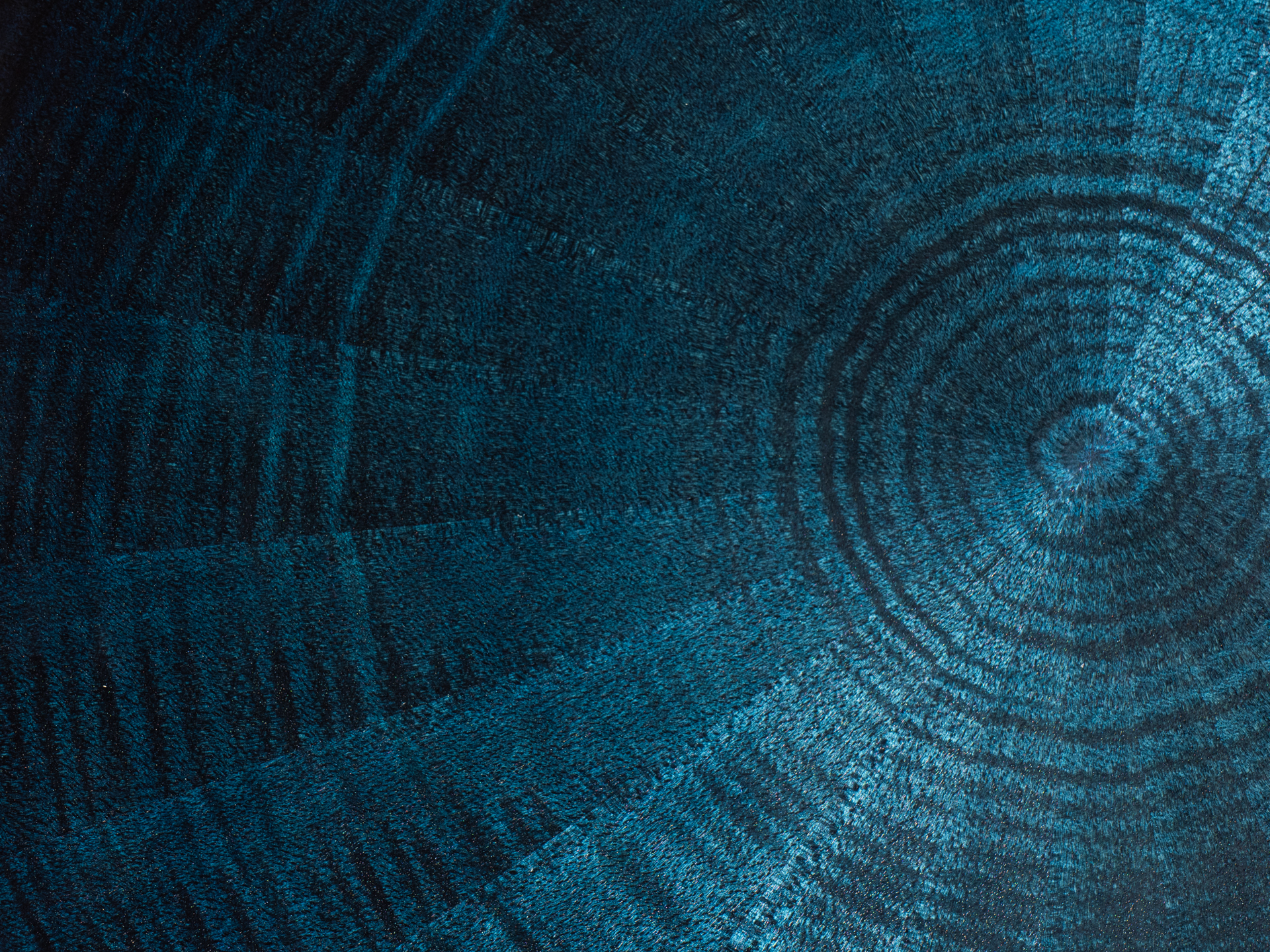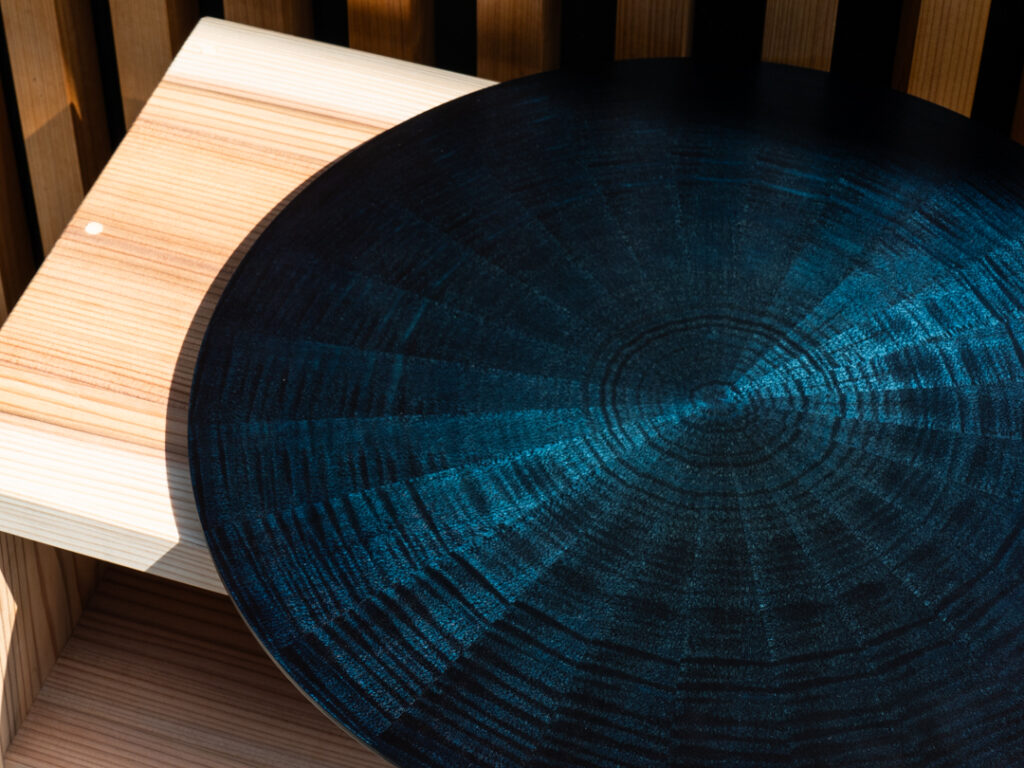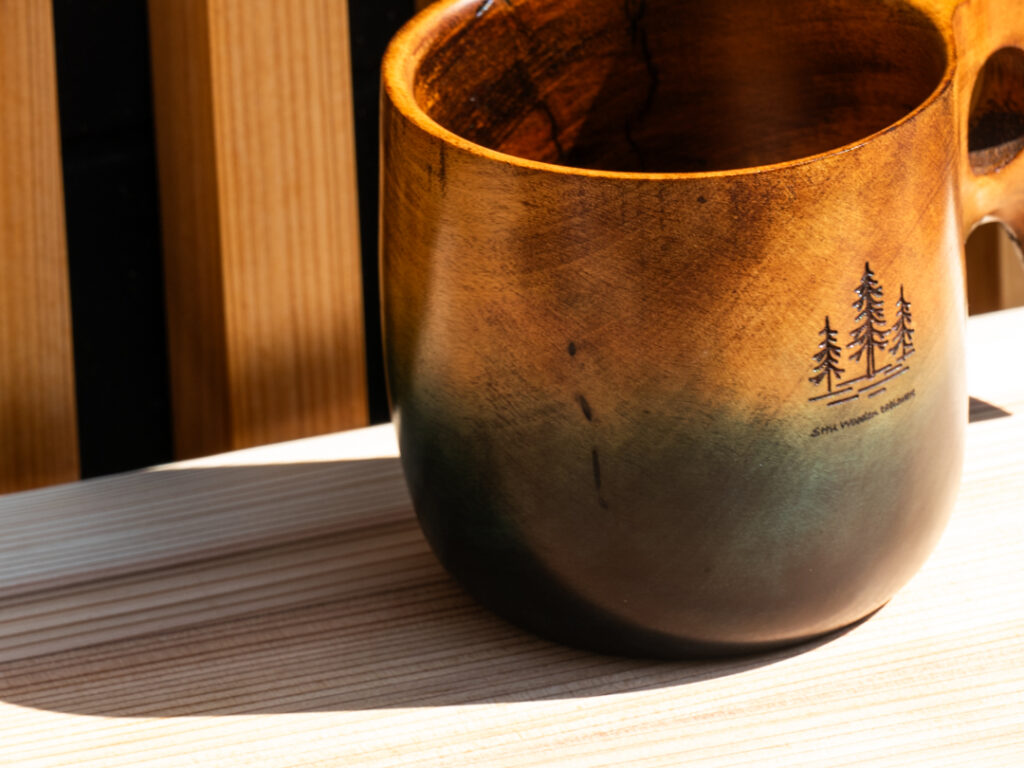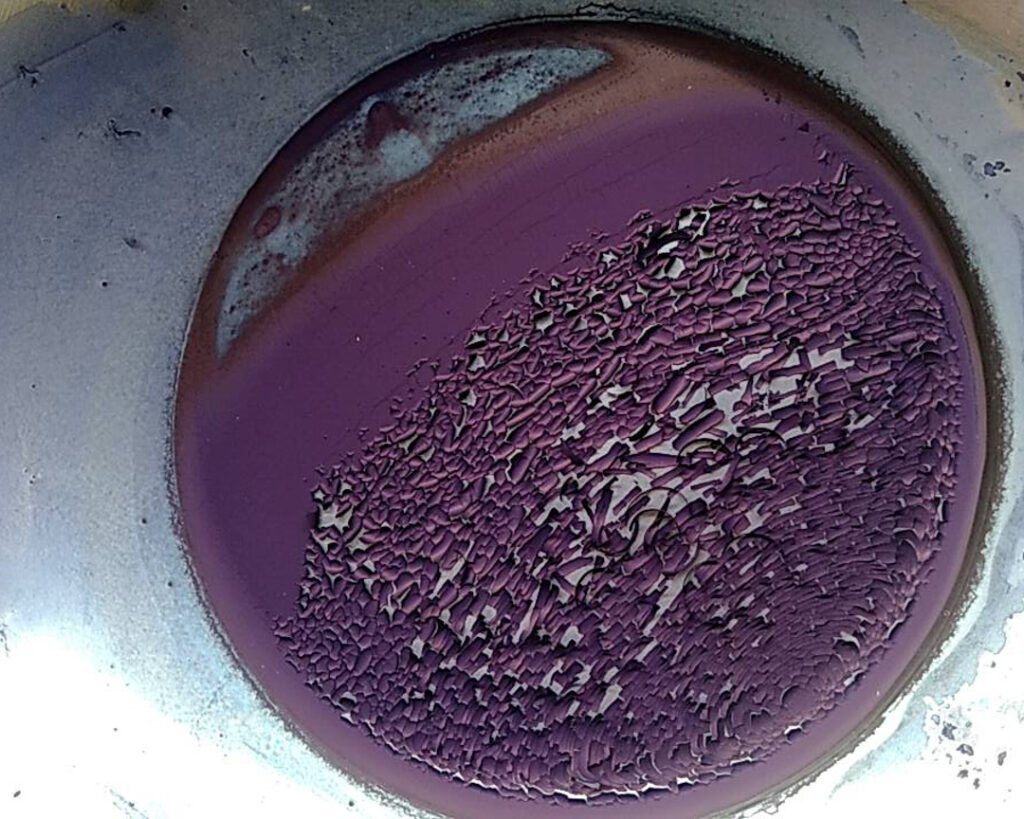
Indigo Urushi
Synergistic Effect of Natural Materials: The Challenge of “Indigo × Urushi”
The Encounter with Indigo: Craftsmanship and Surfing
Nagahara Reki, a dyer who works based in Tokushima, and Iwamoto Daisuke of Tosa Kumiko. And then there was Hodrigo Matsuda, a surfboard shaper and partner at Tsutsumi Asakichi Urushi Inc. Perspective. Collaborating with them to create indigo-dyed wooden surfboards and Kumiko fins deepened our connections and sparked the challenge of Indigo-Urushi.
Takumi “Takumi” borderless / Art Market Tenos
During this project, we became fascinated by the beauty of Indigo and wondered if it was possible to create beautiful Urushi by combining it with natural materials. We consulted Reki Nagahara, and through his introduction, we connected with Researcher Yoshihara from the Tokushima Prefectural Agricultural, Forestry, and Fisheries Technology Support Center. From him, we received settled Indigo, and the development of “Indigo Urushi” began.



Through numerous encounters, we have had the opportunity to explore Ryukyu indigo, Indian Indigo, and other types of Indigo crafted by artisans in Tokushima. Indigo, whose colour varies greatly not only by region but also by the artisan, is much like Urushi, as its quality changes depending on the region, the timing, and the individual who harvests it. We became even more fascinated by it. For this reason, we wished to create “Indigo Urushi” using Tokushima’s Awa Indigo, collaborating with artisans from the region to produce products that truly connect with local craftsmanship.
At present, we are working with Mori Kogei, a company in Tokushima specialising in woodworking crafts using veneer techniques. We are expanding their product range by incorporating Awa Indigo Urushi into their pieces. The appearance of the Indigo Urushi varies depending on the wood grain and colour used in the veneer. The synergistic effects brought by natural materials are immeasurable.